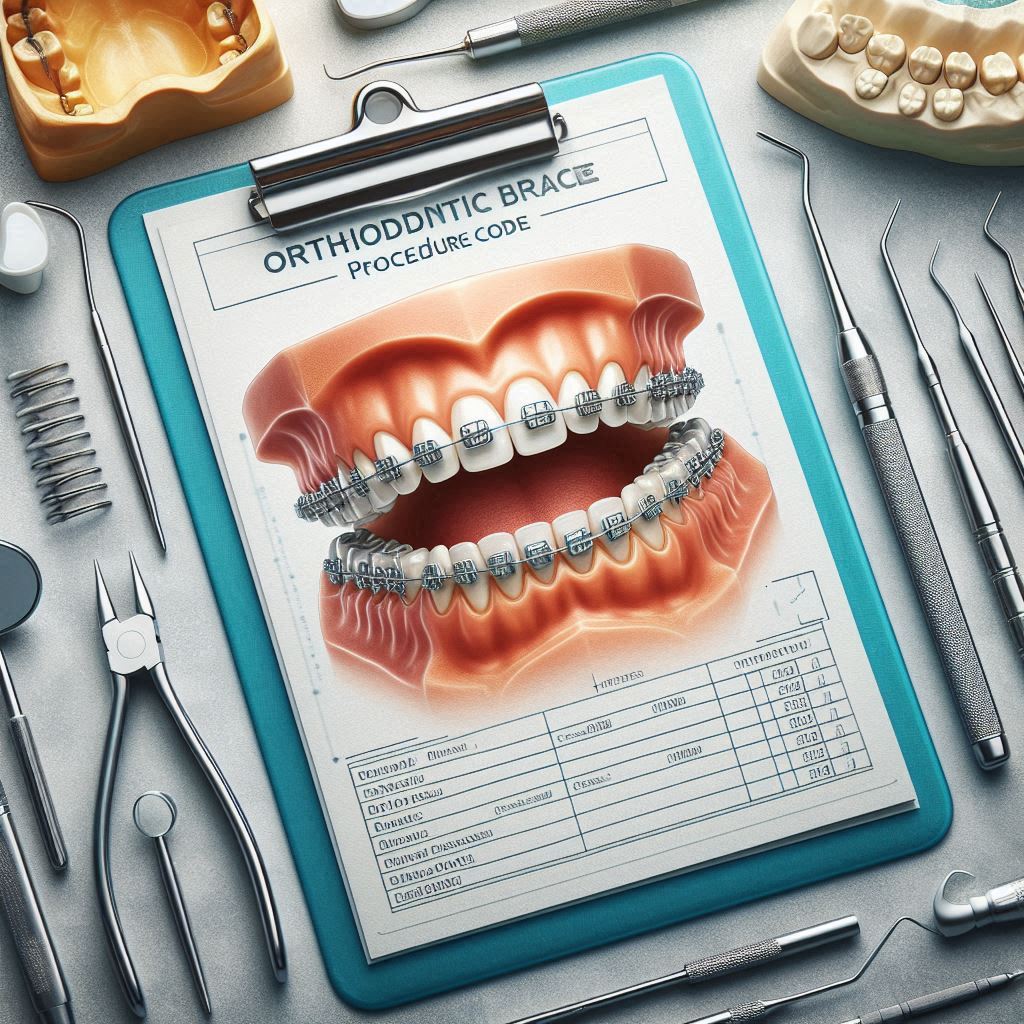Procedure Codes for Orthodontic Braces
Orthodontic braces are a life-changing treatment for millions of patients seeking improved dental alignment, bite correction, and enhanced aesthetics. However, behind every successful orthodontic treatment lies a critical administrative component: accurate procedure coding.
Dental and medical billing for orthodontic braces relies on standardized coding systems such as Current Procedural Terminology (CPT) and Code on Dental Procedures and Nomenclature (CDT). These codes ensure proper insurance claims, reimbursement, and compliance with healthcare regulations.
This guide provides an in-depth, of orthodontic braces procedure codes, covering everything from diagnostic billing to retention phases. Whether you’re a dentist, orthodontist, billing specialist, or patient, this resource will help you navigate the complexities of orthodontic coding with confidence.

2. Understanding Orthodontic Braces and Their Importance
Orthodontic braces are devices used to correct:
- Malocclusions (misaligned bites)
- Crowded or spaced teeth
- Jaw alignment issues
- Aesthetic concerns
Types of Orthodontic Braces
| Type of Braces | Description | Average Cost (USD) |
|---|---|---|
| Metal Braces | Traditional stainless steel brackets | 3,000−3,000−7,000 |
| Ceramic Braces | Tooth-colored or clear brackets | 4,000−4,000−8,000 |
| Lingual Braces | Brackets placed behind teeth | 8,000−8,000−10,000 |
| Invisalign (Clear Aligners) | Removable plastic trays | 3,500−3,500−8,000 |
Each type requires specific procedure codes for billing, which we will explore in detail.
3. Overview of Dental and Orthodontic Procedure Codes
Orthodontic billing primarily uses:
- CDT Codes (D8000-D8999) – Specific to dental procedures
- CPT Codes – Used if medical insurance covers orthodontics (e.g., for jaw surgery)
- ICD-10 Codes – Diagnosis codes justifying medical necessity
Key Differences Between CDT and CPT Codes
| Aspect | CDT Codes | CPT Codes |
|---|---|---|
| Usage | Dental insurance claims | Medical insurance claims |
| Coverage | Mostly cosmetic & functional dental work | Medically necessary procedures (e.g., jaw deformities) |
| Example | D8080 (Comprehensive ortho treatment) | 70355 (Orthodontic radiographic analysis) |
4. Common CPT and ICD Codes for Orthodontic Braces
4.1. Diagnostic Codes (D8000-D8999)
- D8010 – Limited orthodontic assessment
- D8030 – Comprehensive orthodontic records (X-rays, models, photos)
- D8050 – Interceptive orthodontic treatment
4.2. Preventive and Interceptive Orthodontic Codes
- D8670 – Periodic orthodontic evaluation
- D8680 – Orthodontic retention (removalbe retainer)
4.3. Comprehensive Orthodontic Treatment Codes
- D8080 – Comprehensive orthodontic treatment (full braces)
- D8090 – Comprehensive ortho treatment for mixed dentition
4.4. Limited Orthodontic Treatment Codes
- D8210 – Minor tooth movement (per tooth)
4.5. Orthodontic Retention and Post-Treatment Codes
- D8680 – Retainer adjustment
- D8690 – Fixed retainer placement
(Continue with detailed explanations of each code, insurance implications, and case examples.)
5. Insurance Coverage and Reimbursement for Orthodontic Procedures
- Medically Necessary vs. Cosmetic Claims
- Age Limits for Coverage (Commonly under 18)
- Pre-authorization Requirements
6. How to Submit Claims with the Correct Procedure Codes
- Step-by-step guide on claim submission
- Common denial reasons and how to avoid them
7. Common Mistakes in Coding for Orthodontic Braces
- Incorrect bundling of services
- Missing supporting documentation
- Using outdated codes
8. Updates in Orthodontic Coding (Latest Revisions)
- 2024 CDT code changes
- New ICD-10 codes affecting orthodontics
9. Case Studies: Real-World Examples of Orthodontic Billing
- Case 1: A teen needing full braces (D8080)
- Case 2: An adult with Invisalign (D8090)
10. FAQs on Orthodontic Procedure Codes
Q: What is the most commonly used orthodontic procedure code?
A: D8080 (Comprehensive orthodontic treatment) is the most frequently billed code.
Q: Does medical insurance cover orthodontic braces?
A: Only if deemed medically necessary (e.g., jaw deformities, sleep apnea).
Q: How often do orthodontic codes change?
A: CDT codes are updated annually, so staying current is crucial.
11. Conclusion
Understanding orthodontic procedure codes is essential for accurate billing, insurance claims, and compliance. This guide covered CDT and CPT codes, insurance considerations, and best practices for submitting claims. By mastering these codes, orthodontic professionals can ensure smoother reimbursements and fewer denials.


